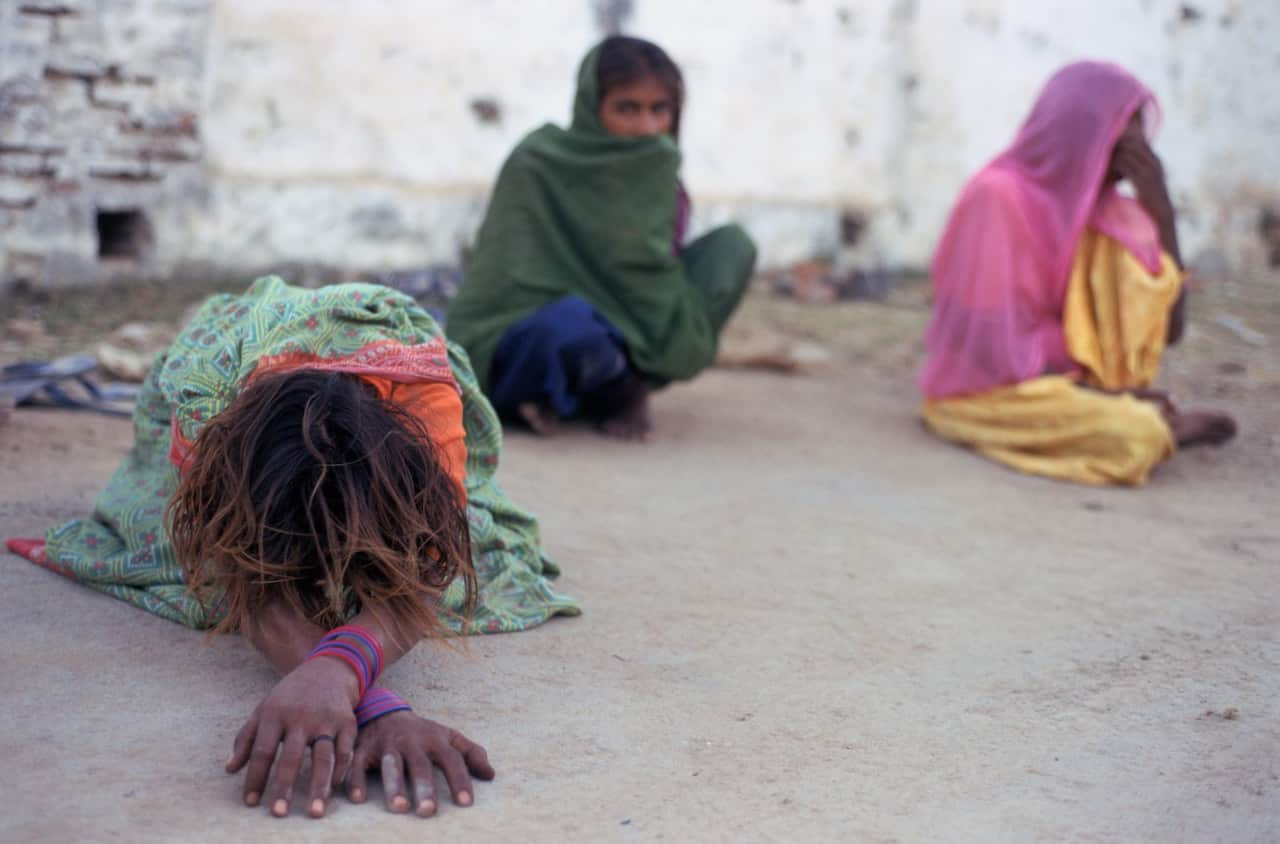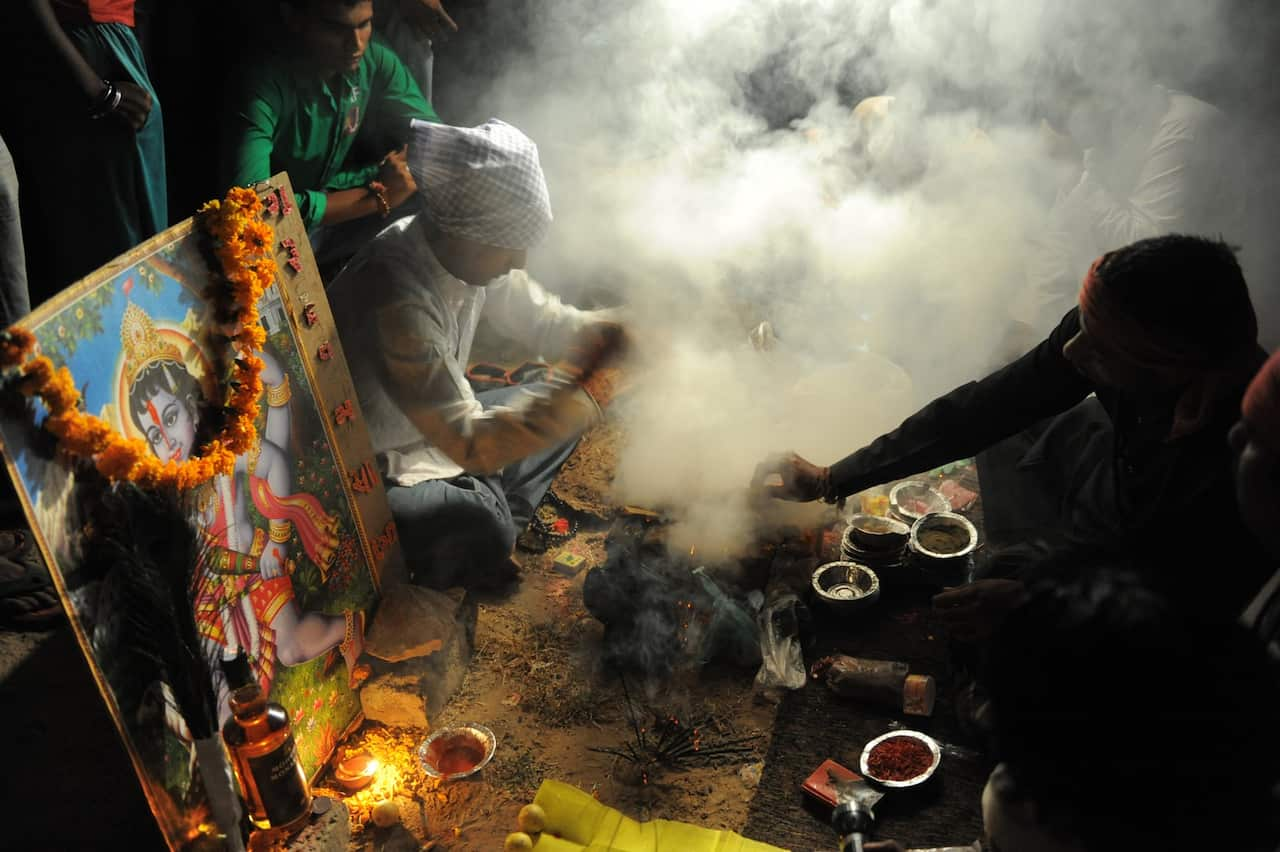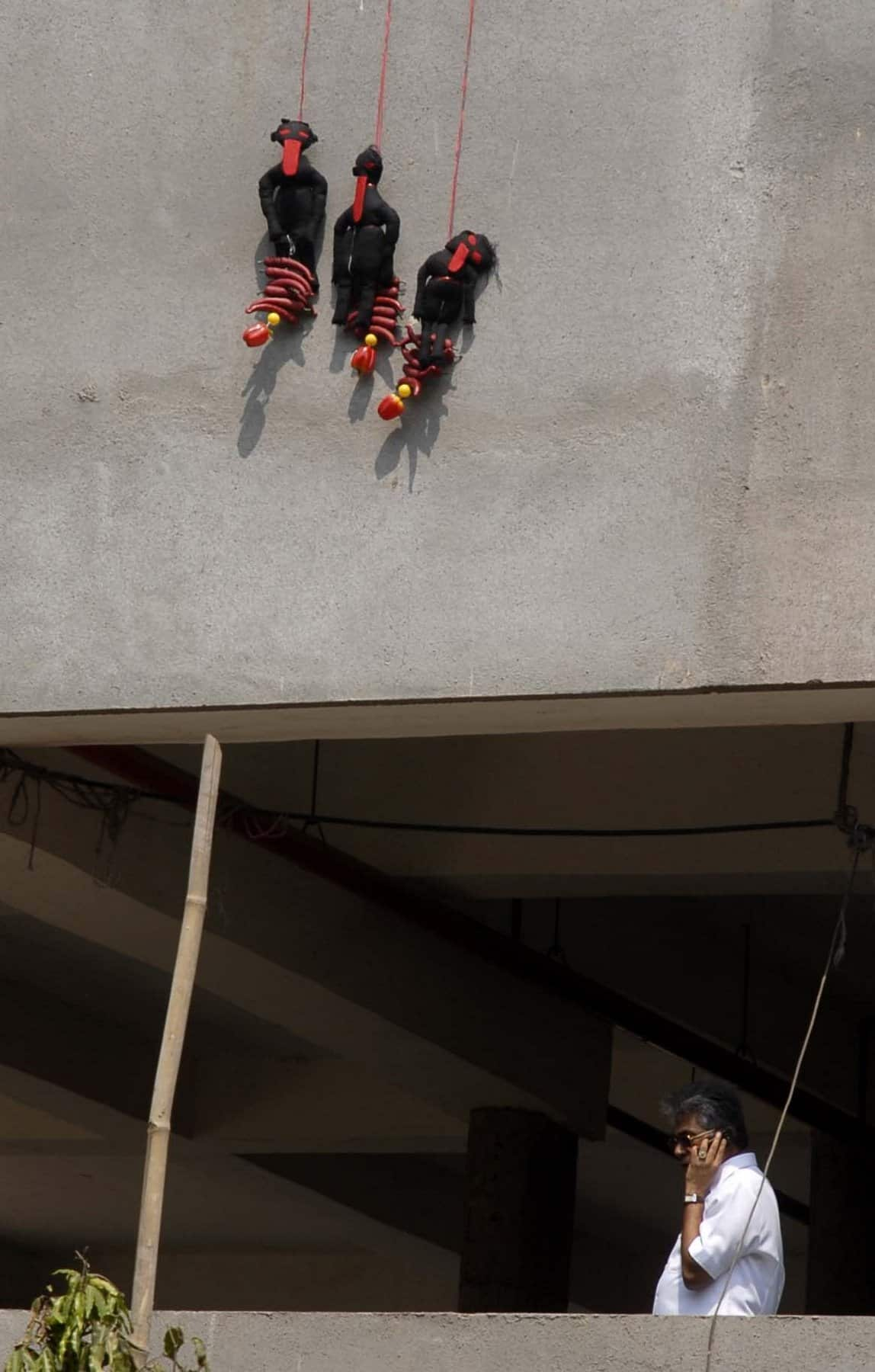On Wednesday, a villager, in the eastern state of Jharkhand in India, allegedly hacked his grandmother to death on the suspicion that she was a ‘witch’.
It's not an isolated case. Dr Mayur Suresh, recently appointed UNSW Law Future of Change Indian Fellow, has many such stories.
“A village headman’s young son in a small village in the eastern state of Jharkhand in India kept on climbing up the tamarind tree and kept falling off,” he said.

Tribal woman in trance. She belongs to the Bhil tribe. Near the mausoleum of the muslim saint Fakhruddin. Source: Getty Images/franck metois
“In that society, there is no conception of accidents of faith or just clumsiness. Everything has a reason. So, if someone is falling off a tree, it means that someone has done something.”
Dr Suresh is in Australia to formulate a research project based on court trials in India, where villagers have been accused of orchestrating a social boycott and killing women they believe to be witches.
“The headman goes to an Ojha (witch-doctor). The Ojha says the reason your son keeps falling off the tree is that someone has put black magic on your son,”
“The witch-doctor pointed towards a couple.”
“This a different case because husband and wife both accused of being witches. The village headman threatened them, and they knew if they stayed in the village this would come to some physical hart. So, they had to go into hiding. They stayed in the nearby forest for a good couple of weeks before going to the police,” says Dr Suresh who was awarded a PhD from Birkbeck College, University of London.
Witch-hunting in India
In his book Witchcraft: A study in Indian occultism, published in 1981, RN Saletore, says witchcraft or "demonology" was a practice sanctioned by Hindu scriptures. Rig Veda, an essential book of Indian mythology, also mentions witchcraft as a profession.
Today, the practice exists in several forms in many states across India. The practice claimed more than 2000 lives, mostly women, across the country between 2000 and 2012.
According to police data, between 2016-2019, 123 people - mostly women - were killed after being suspected of being witches.

Tantrik or Voodoo performers participate in rituals at a crematorium on the outskirts of Ahmedabad late on October 25, 2011. Source: SAM PANTHAKY/AFP via Getty Images
Motivations behind the practice
A law graduate from the National Law School of India University (NLS) Bangalore, Dr Mayur Suresh is now working in collaboration with UNSW, Sydney, to analyse his fieldwork around the cases of witchcraft.
“My study is aimed at looking at these cases to see what are the motivations behind it and how these hunting practices actually happened and how were they tried before the courts,” he says.
Dr Suresh, who joined SOAS University of London in 2015 as a lecturer, has finished six weeks of fieldwork in Jharkhand, and now he is analysing the data.
Many studies have indicated that property is a major factor, with people wanting to take over someone else’s property. That is why they make such allegations of which craft.
Dr Suresh does not agree.

To ward off the evil eye members of Adarsh society in Cuffe Parade have put up three voodoo dolls on the building. Source: Kalpak Pathak/Hindustan Times via Getty Images
“If you want to take over someone’s property, there are easier ways of doing it. I think its more to do with the kind of belief system that they have in both the rural and urban India, of different beliefs in supernatural powers. That is what I think behind the witchcraft allegations.”
It is surprising for many in India that such practices exist. However, Dr Suresh points to the fact that it is more widespread than what people think.
“Whether in India or UNSW, everyone has a story of this kind. These witchcraft allegations are not just limited to India. It happens around the world. The more you dig into it, the more you realise that people believe in certain things,” Dr Suresh explains.




